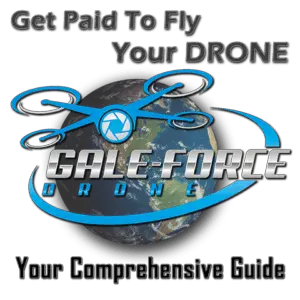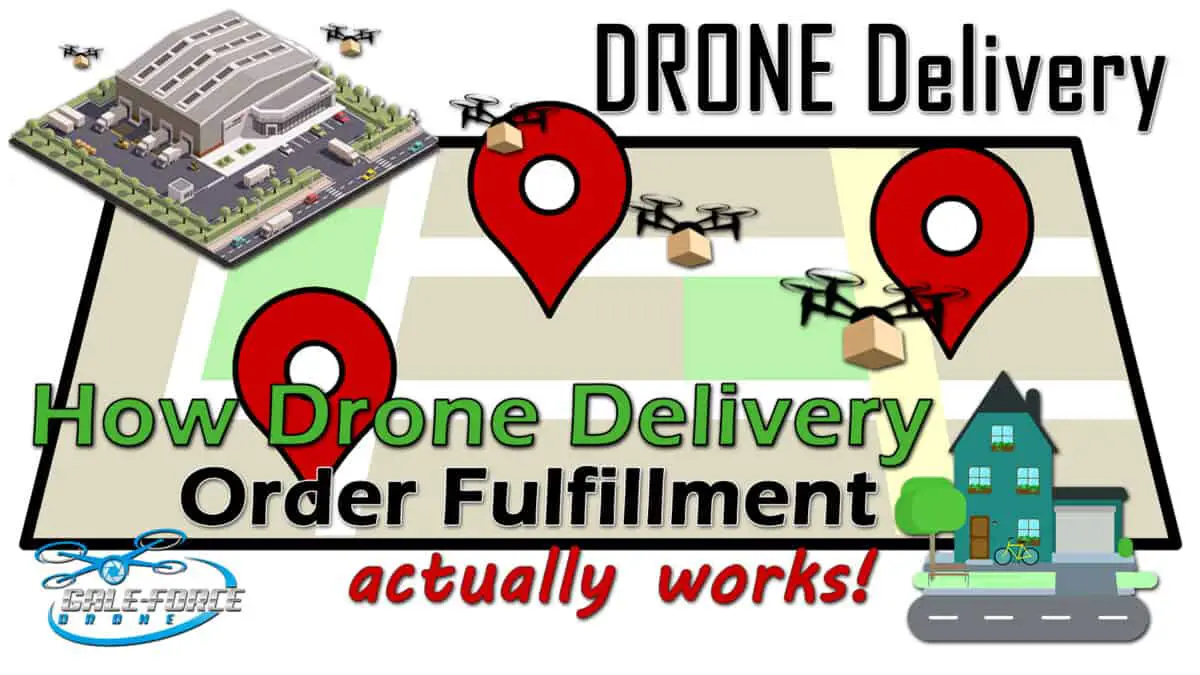
In a previous article, “Drone Delivery; the future is now” we discussed the equipment and certifications required for Drone Delivery. While the conduct of cargo delivery is certainly an important step in the delivery process, it is only a single step in a chain of events, and the rest of the chain needs to be understood and planned for. This article discusses how to prepare your drone startup business for Drone Delivery using an end-to-end systems approach.
Drone Delivery is one of the Hottest Trends
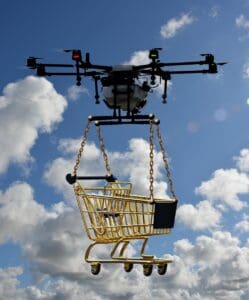 Drone Delivery is poised to be one of the hottest trends in the 2020’s, with some of the highest anticipated growth of any industry. Previously, we took a look at the FAA’s current policy to certify as a Part 135 Air Carrier, and what kinds of drones are suitable for drone delivery.
Drone Delivery is poised to be one of the hottest trends in the 2020’s, with some of the highest anticipated growth of any industry. Previously, we took a look at the FAA’s current policy to certify as a Part 135 Air Carrier, and what kinds of drones are suitable for drone delivery.
As a Drone Delivery organization, there is a lot more to this story than watching a drone fly away with a box. To understand this, let’s take a step back from “Drone Delivery”, and instead look at “Order Fulfillment”.
Order Fulfillment Process
As drone enthusiasts, we tend to focus on the technology performance and new use cases. There certainly is no shortage of drone technological evolution events to keep us occupied, and it is a very exciting time to be a drone professional.
As a Business Person, the technology performance becomes slightly less interesting, and the business process becomes more important. As Garry Kasparov once observed (now known as the “Kasparov Principle”) that a superior process will defeat a superior product.
What does this mean? It means that the best cargo drone on the planet will not make you a single dollar until you implement an adequate and sustainable process to employ it.
Let’s take a look at some examples from other walks of life.
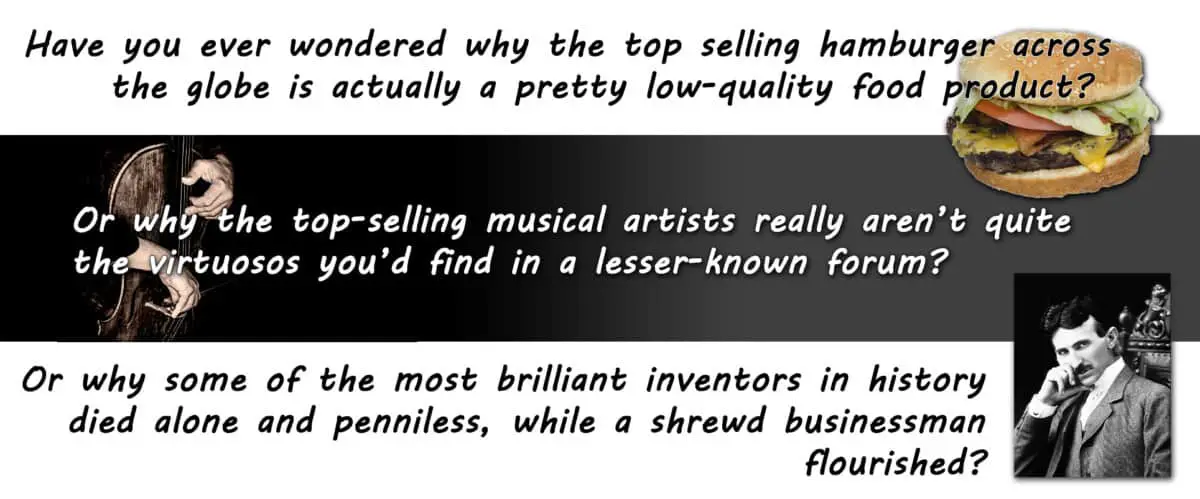
The answer to all three is business process. The unhealthy (and ever-so-tasty) hamburger outsells gourmet cuisine because the restaurant has found a way to produce it cheaper than its competitors, and saturate the market to the point where consumer convenience beats quality. The rich-and-famous musicians employ business-savvy managers and agents to reach the widest audience instead of focusing on artistic development. And scientific geniuses often could not tell you the first thing about how their invention can be efficiently produced at scale to enrich people’s lives.
Today’s e-commerce giants invest extraordinary resources to optimize their fulfillment process, and they are truly world-class logisticians. The quality of the products that they sell are almost irrelevant: they can still make money selling a lousy product.
What exactly is this process? To quickly describe the chain of events, I will use a (highly-simplified) Sequence Diagram. This is a basic engineering method to identify the users/entities and their actions/interactions amongst one another. Read the chronological sequence of actions from top to bottom.
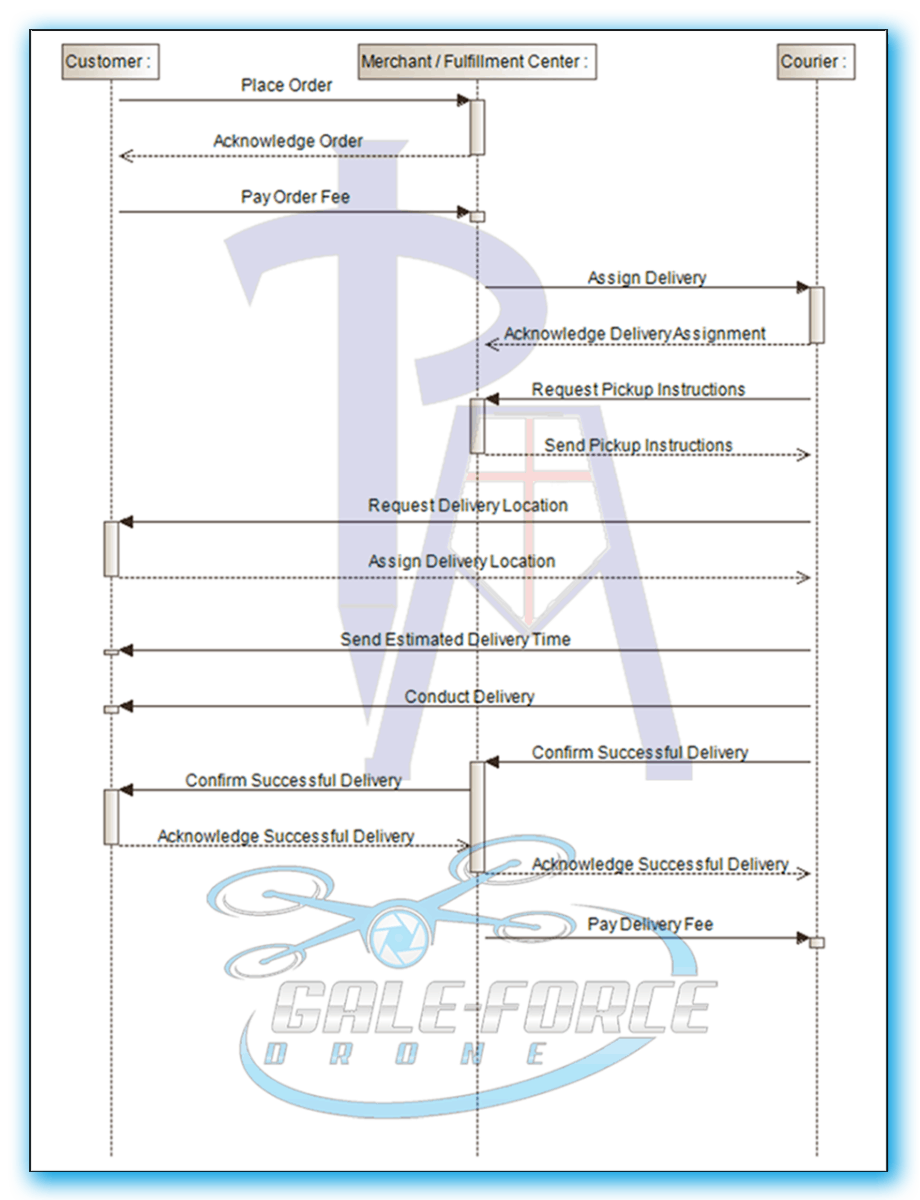
In this diagram, the “Courier” is the drone operator. It could be a third-party individual or company, or could be a branch of the merchant company. Regardless of the Courier’s demographic, I want to focus on his part in the fulfillment process.
End-To-End Delivery System
Our previous article went into some detail about how to conduct a drone delivery while satisfying public safety requirements. Let’s highlight that step (red box) in the Sequence Diagram.
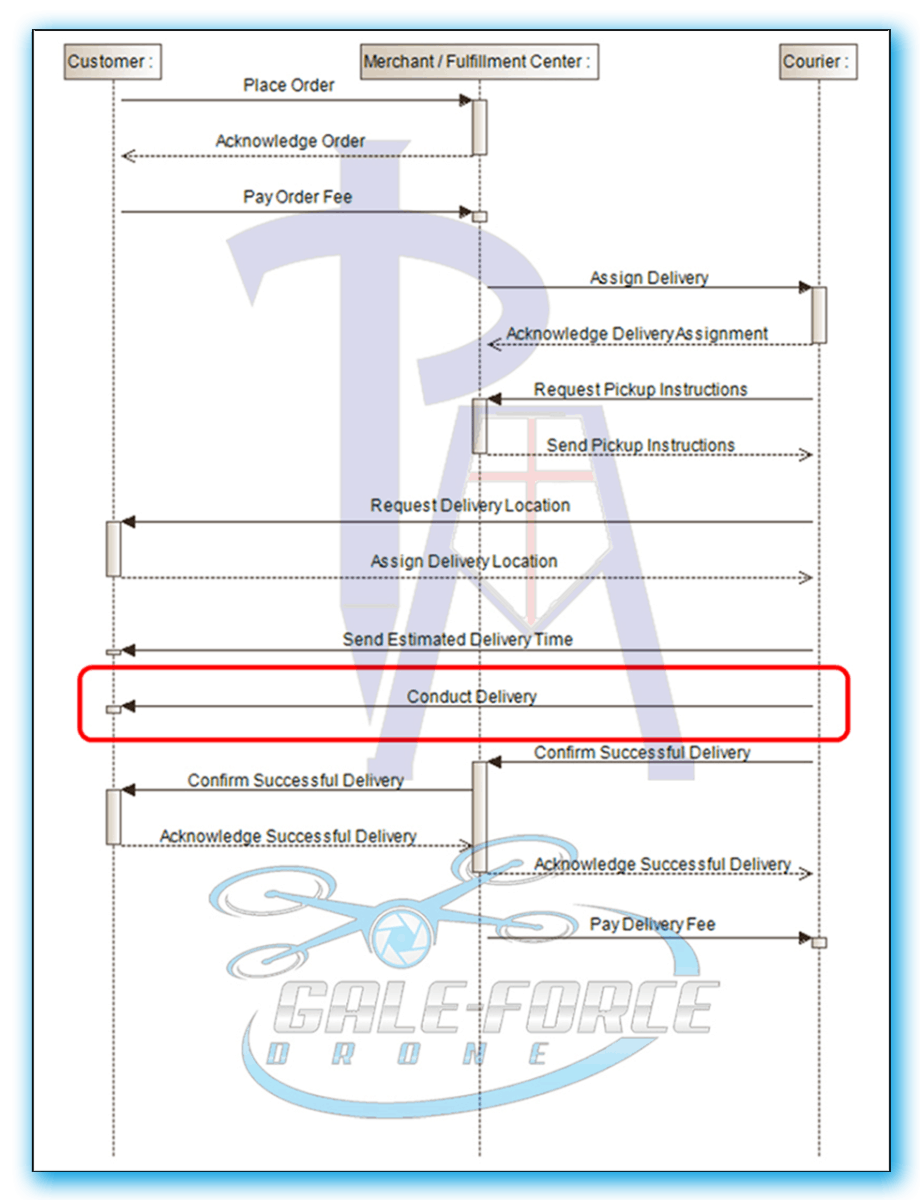
That’s it! All that REGULATION, CERTIFICATION, and equipment INVESTMENT for this ONE STEP in the Drone Delivery chain of events!
Now that we have a more complete appreciation for the logistical challenge of Drone Delivery, we see that information exchange comprises the vast majority of this process. Let’s spend some time taking a look at the Courier’s responsibilities to the Merchant and Customer (blue box) and revisit his tools and processes.
 Within the confines of the blue box, the Courier should be able to answer the following questions.
Within the confines of the blue box, the Courier should be able to answer the following questions.
- Where do I pick up the cargo?
- How do I get there?
- Where do I drop off the cargo?
- How do I get there?
- When will I get there?
Software Requirements
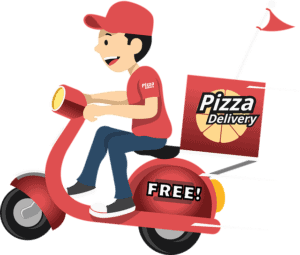 Let’s use pizza delivery as an analogy to how these challenges have been addressed in the past, say in the 1990’s. We’ll then take another look at how pizza delivery has evolved to fit today’s environment.
Let’s use pizza delivery as an analogy to how these challenges have been addressed in the past, say in the 1990’s. We’ll then take another look at how pizza delivery has evolved to fit today’s environment.
Pizza Delivery, 1990’s
- Where do I pick up the cargo?
- How do I get there?
In the 1990’s, most delivery shops had a cadre of in-house delivery personnel assigned to that local area. They were usually already at the shop at the time of the order, so these questions were self-explanatory.
- Where do I drop off the cargo?
At the time of the order, the delivery address was specified. It was either a street address or known landmark that the driver could find on a paper map. The delivery radius around the shop was usually pretty small (often less than 5 miles), so an experienced driver usually had a decent mental map of the popular delivery destinations.
- How do I get there?
Within the small delivery radius, the road system gave the driver only one or two realistic options of how to navigate to the customer’s address (remember, mapping software was not a household item in the 1990’s). For unfamiliar locations, the route of choice often became the closest match to a straight line from the shop to the customer.
- When will I get there?
Some shops advertised delivery within 45 minutes, or the pizza is free! (These shops set very small delivery radii.) The shop knew about how long it will take to cook the pizza, and the driver could estimate about how long it would take to navigate through the delivery area, so “30-45 minutes” was a common estimate.
Pizza Delivery, 2020’s
- Where do I pick up the cargo?
Nowadays, the pizza shop does not need to maintain its own cadre of drivers, and a freelance driver can support multiple pizza shops in a single evening. When the driver accepts a delivery job, they need to know at which shop to pick up the pizza.

How do I get there?
With mobile device maps, route selection and navigation assistance comes from the tiny screen mounted to the dashboard. There are still limited options based on the road system, but there might be a few alternate routes in certain areas.
- Where do I drop off the cargo?
The delivery location is usually specified at the time of order, but it does not necessarily have to be a street address anymore. Using GPS waypoints, the delivery destination could be at a park, the beach, or a street party. Anywhere that a blue dot can appear on a GPS display is fair game for a delivery destination.
- How do I get there?
The delivery radius can be much larger than it was in the 1990’s, since drivers do not have to rely on paper maps and memory to know the area. Mapping software gives real-time adjustments to the navigation based on traffic conditions and construction hazards. It will find the most efficient route from the driver’s current location to that GPS waypoint.
- When will I get there?
Once again, the mapping software provides a realistic estimate of the time to travel the suggested route, and will even provide highly accurate updates throughout the journey.
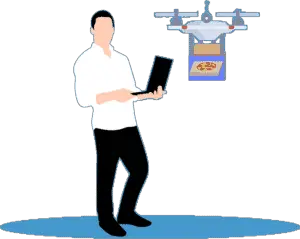 Drone Delivery, 2020’s
Drone Delivery, 2020’s
Let’s take our pizza delivery example, and replace “driver” with “drone pilot”. Using the tools we have at our disposal, how do we accomplish the same functions to answer the questions?
There are three key functions that I’d like to focus on: airspace analysis, route planning, and landing site selection.
Airspace Analysis
Every drone pilot, regardless of experience level, should have a basic understanding of airspace: where they can and cannot legally fly, who controls it, and who may be sharing it. If we were all lucky enough to live in Class G airspace, then this would be a trivial challenge! The reality is that many of us have to exert some effort to legally access airspace, whether through COAs, LAANC authorizations, local ATC authorizations, or special use airspace authorizations. Furthermore, temporary restrictions tend to pop up to create temporary prohibitions. If we are lucky, we can get a blanket authorization that covers a major portion of the delivery area with no further coordination. More realistically, we are limited to specific flying areas on specific days, which presents a scheduling challenge for the Drone Delivery pilot.
Route Planning
Automobiles are limited to roads; drones are not. In the simplest of examples, a drone delivery route can simply be a straight line from the pickup site to the drop-off site at a constant altitude, such as 200 ft. AGL.
The real world, however, likes to throw us some curveballs that will put some turns, climbs, and descents into our flight path.
- Restricted or unauthorized airspace along the route of flight.
- Densely populated areas.
- Vertical obstacles.
If your Drone Delivery mission routinely follows the same path, then you have the luxury of doing this heavy analysis once – but remember to check for updates before each flight! A likely scenario for Drone Delivery pilots is a new route every day, so you will want to explore automated tools to expedite this process.
Landing Site Selection
Unless you intend to hand-fly your cargo drone along its route of flight, you are probably intending to use an autonomous landing to gently drop off the cargo. If your delivery target is a street address, where exactly will your drone conduct its autonomous landing? At the mailbox, driveway, or front door? Will it wave off and return home if it senses a vehicle parked in the driveway?
A robust delivery system should be able to autonomously select a suitable landing site with minimal pilot input, and adjust its terminal flight path accordingly. Here are some considerations I would look for in autonomous landing site selection algorithms.
- Site size. The area should have sufficient clearance from ground obstacles and personnel so that a wind gust or lateral drift will not cause a dangerous situation. As a general rule of thumb, the landing site should be a minimum of three times the length and width of the drone for safe clearance. Once we add in the natural inaccuracies with GPS guidance, we should double the site clearance requirement to six times the length and width of the drone.
- Site slope. A clear zone on a mountain slope is a poor landing site. Even with external loads, the site should be relatively flat—less than 5° of slope is a good target.
- Obstacle clearance. Not only should the ground site be clear of obstacles, but the approach and departure corridors should be open enough to allow for some guidance and navigation errors without causing an impact. Some obstacles (such as buildings) can adversely impact datalink reception, compass accuracy, and GPS signals.
- Wind direction. Believe it or not, even a multirotor drone behaves differently in wind! The drone has its own aerodynamic qualities that make it operate more or less efficiently depending which relative direction the wind is coming from. Once you add an external load, these aerodynamic qualities change slightly. Tail-rotor helicopters actually land more efficiently with a headwind than in a zero-wind environment. As a general rule, autonomous landings should select a headwind whenever possible, or at least as close to a headwind as the obstacles allow.
Democratizing Drone Delivery
We have already seen drone pilot networks for aerial photography services. Pilots join a network, which provides a marketplace to match the pilots with customers requesting services.
This same approach is also being used for ride-sharing and food delivery: Uber, Lyft, Grubhub, and Doordash all utilize a driver network to connect freelance drivers with customers looking for transportation services.
What happens when a drone pilot network crosses paths with a ride-sharing or food delivery network: a Drone Delivery network! Though this is a few years off, it is not a tremendous stretch to envision Drone Delivery being conducted by a network of freelance drone pilots, just as we are doing with cars and drivers today. Current FAA policy presents challenges that are difficult to overcome, but I expect the restrictions to slowly relax over the next several years.
Drone Delivery is an exciting use case
In its infancy, it is accessible only to large companies that can afford the investment of resources to develop a reliable and repeatable process. As these giants demonstrate success, barriers to entry will erode, and smaller companies and individual pilots will be able to compete in this marketplace as well.
It is important to know that the drone itself is only part of the investment. To conduct optimized operations, the Drone Delivery pilot needs a robust suite of mission planning and monitoring systems. The Drone Delivery business needs to fit itself into the professional end-to-end fulfillment process.
How To Get Your FAA Part 107 Pilot Certification
If you are serious about making money with your drone, whether it be Real Estate, Aerial Inspections, etc., then you will need, from the FAA a 14 CFR Part 107 certification.
The best source for your training can be found by clicking on RemotePilot101. Jason Schappert is a pilot and author of 8 best-selling aviation flight training books. While studying and taking tests is not the most fun, Jason breaks it down into 10 easy to follow (at your own pace) video lessons. These lessons are straight and to the point giving you the exact knowledge, nothing less, nothing more than what you need to pass the exam. Additionally, he is continually updating the training to keep it relevant to any changes to FAA regulations. This membership is a 1-time subscription – for life! So when you’re 24 month renewal comes around, just sign in to RemotePilot101 and refresh your training.
Just remember, if you are flying commercially, you will need your Part 107 certification. It’s not hard, you can do it!
